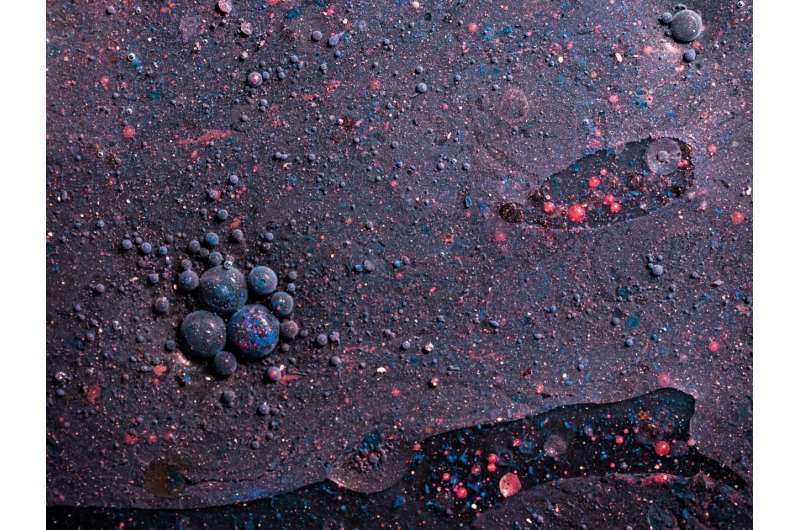Replicated molecules reveal hiding method of bacteria

Specific fatty acid-sugar molecules allow leprosy bacteria, among others, to hide from our immune system. How exactly is not entirely clear. Hessel van Dijk, who received his Ph.D. on October 13, replicated the molecules, helping to solve a piece of the puzzle. Van Dijk’s dissertation is titled “Synthesis of Mycobacterial Phenolic Glycolipids.”
As early as the 1950s, scientists found phenolic glycolipids (PGLs) in the cell membranes of mycobacteria such as Mycobacterium tuberculosis and M. leprae. These bacteria cause tuberculosis and leprosy. But only in recent years has serious work been done to recreate PGLs in the lab. Hessel van Dijk took on that task during his Ph.D. project, working together with the University of Groningen. On 13 October, the organic chemist defended his thesis.
Like a rapid test for COVID-19
You can use phenolic glycolipids to diagnose leprosy, for example. The leprosy bacterium makes a certain PGL in large numbers. You can synthesize this PGL and use the molecules in a test that works in a similar way as a rapid test for COVID-19. If you are infected, your antibodies bind to the PGLs, resulting in a positive test outcome. “From that knowledge, the ideas started flowing. What else can we do with those molecules?”
“Molecule baking” is what Van Dijk calls his activities. PGLs usually consist of chains of three sugar molecules and two different fatty acids. “You have to synthesize and link those one by one via chemical reactions, a lengthy process sometimes containing dozens of steps.” The sugar part of the molecule is unique to each bacterium. “Those sugars had been replicated in previous studies, but hardly any experiments had been done with entire PGLs.”
Alarm bells and hiding: Talents of bacteria
Mycobacteria use PGLs to fool the immune system. Presumably, this happens as follows. First, the bacteria make substances that alarm the immune system, then immune cells (macrophages) “eat” the invader. Once inside the macrophage, the bacterium makes a substance that indicates “I’m harmless, just ignore me,” after which it can multiply in peace. Eventually the immune cells burst open, releasing hundreds of new bacteria per cell. “The bacteria can be nestled in your immune system for up to 20 years, until it seizes the right opportunity.”
With Van Dijk’s molecules, research partners found clues that support the hypothesis. The earlier mentioned PGL, used to diagnose leprosy, is one such compound that the immune system considers harmless. If you are one biosynthesis step away from that molecule, you have a compound to which the immune system reacts very strongly. “The running hypothesis now is that the bacteria deliberately do not complete PGL synthesis, causing the immune system to sound the alarm. Once in the macrophage, the final synthesis step happens, resulting in a PGL that is left alone by the immune cells.”
New approach
The observation came as a surprise to Van Dijk. “A molecule that was always ignored—after all, you can’t diagnose anything with it—turned out to be a confirmation for the hypothesis. We found a new angle.” Immunologists have already taken the results further. “My molecules might eventually lead to new drugs, which for example prevent the bacteria from being able to execute that last synthesis step. Then they can no longer fool the immune system.”
Meanwhile, Van Dijk continues with postdoctoral research at LUMC. It involves sugars again, but without the fatty acid-part this time. “We want to synthesize sugars that occur in parasitic worms, in the hope that they can be used as a diagnostic tool.”
Making tuberculosis more susceptible to antibiotics
Citation:
Replicated molecules reveal hiding method of bacteria (2022, October 14)
retrieved 15 October 2022
from https://phys.org/news/2022-10-replicated-molecules-reveal-method-bacteria.html
This document is subject to copyright. Apart from any fair dealing for the purpose of private study or research, no
part may be reproduced without the written permission. The content is provided for information purposes only.
For all the latest Science News Click Here
For the latest news and updates, follow us on Google News.

